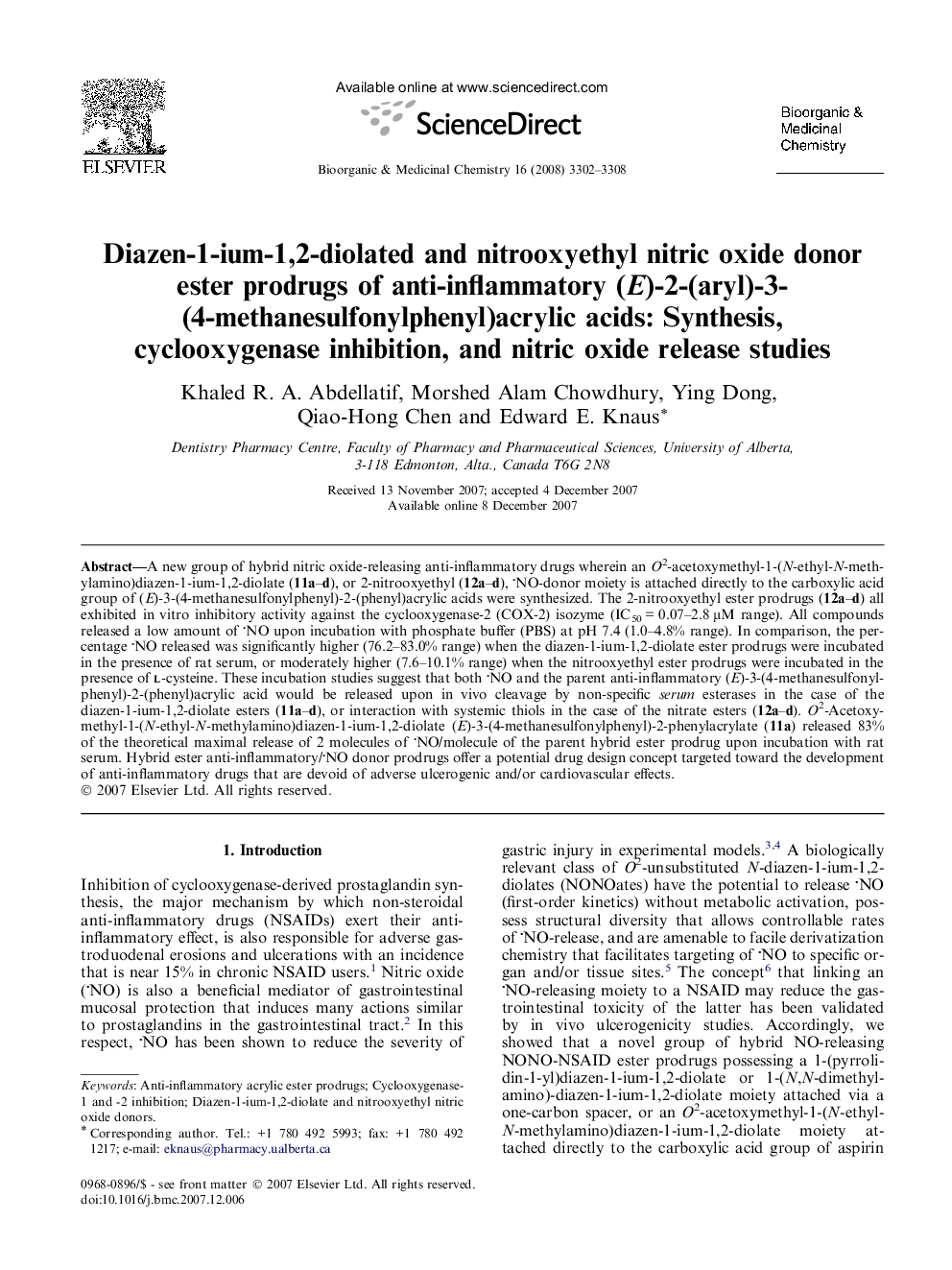| کد مقاله | کد نشریه | سال انتشار | مقاله انگلیسی | نسخه تمام متن |
|---|---|---|---|---|
| 1361192 | 981458 | 2008 | 7 صفحه PDF | دانلود رایگان |

A new group of hybrid nitric oxide-releasing anti-inflammatory drugs wherein an O2-acetoxymethyl-1-(N-ethyl-N-methylamino)diazen-1-ium-1,2-diolate (11a–d), or 2-nitrooxyethyl (12a–d), NO-donor moiety is attached directly to the carboxylic acid group of (E)-3-(4-methanesulfonylphenyl)-2-(phenyl)acrylic acids were synthesized. The 2-nitrooxyethyl ester prodrugs (12a–d) all exhibited in vitro inhibitory activity against the cyclooxygenase-2 (COX-2) isozyme (IC50 = 0.07–2.8 μM range). All compounds released a low amount of NO upon incubation with phosphate buffer (PBS) at pH 7.4 (1.0–4.8% range). In comparison, the percentage NO released was significantly higher (76.2–83.0% range) when the diazen-1-ium-1,2-diolate ester prodrugs were incubated in the presence of rat serum, or moderately higher (7.6–10.1% range) when the nitrooxyethyl ester prodrugs were incubated in the presence of l-cysteine. These incubation studies suggest that both NO and the parent anti-inflammatory (E)-3-(4-methanesulfonylphenyl)-2-(phenyl)acrylic acid would be released upon in vivo cleavage by non-specific serum esterases in the case of the diazen-1-ium-1,2-diolate esters (11a–d), or interaction with systemic thiols in the case of the nitrate esters (12a–d). O2-Acetoxymethyl-1-(N-ethyl-N-methylamino)diazen-1-ium-1,2-diolate (E)-3-(4-methanesulfonylphenyl)-2-phenylacrylate (11a) released 83% of the theoretical maximal release of 2 molecules of NO/molecule of the parent hybrid ester prodrug upon incubation with rat serum. Hybrid ester anti-inflammatory/NO donor prodrugs offer a potential drug design concept targeted toward the development of anti-inflammatory drugs that are devoid of adverse ulcerogenic and/or cardiovascular effects.
Figure optionsDownload as PowerPoint slide
Journal: Bioorganic & Medicinal Chemistry - Volume 16, Issue 6, 15 March 2008, Pages 3302–3308